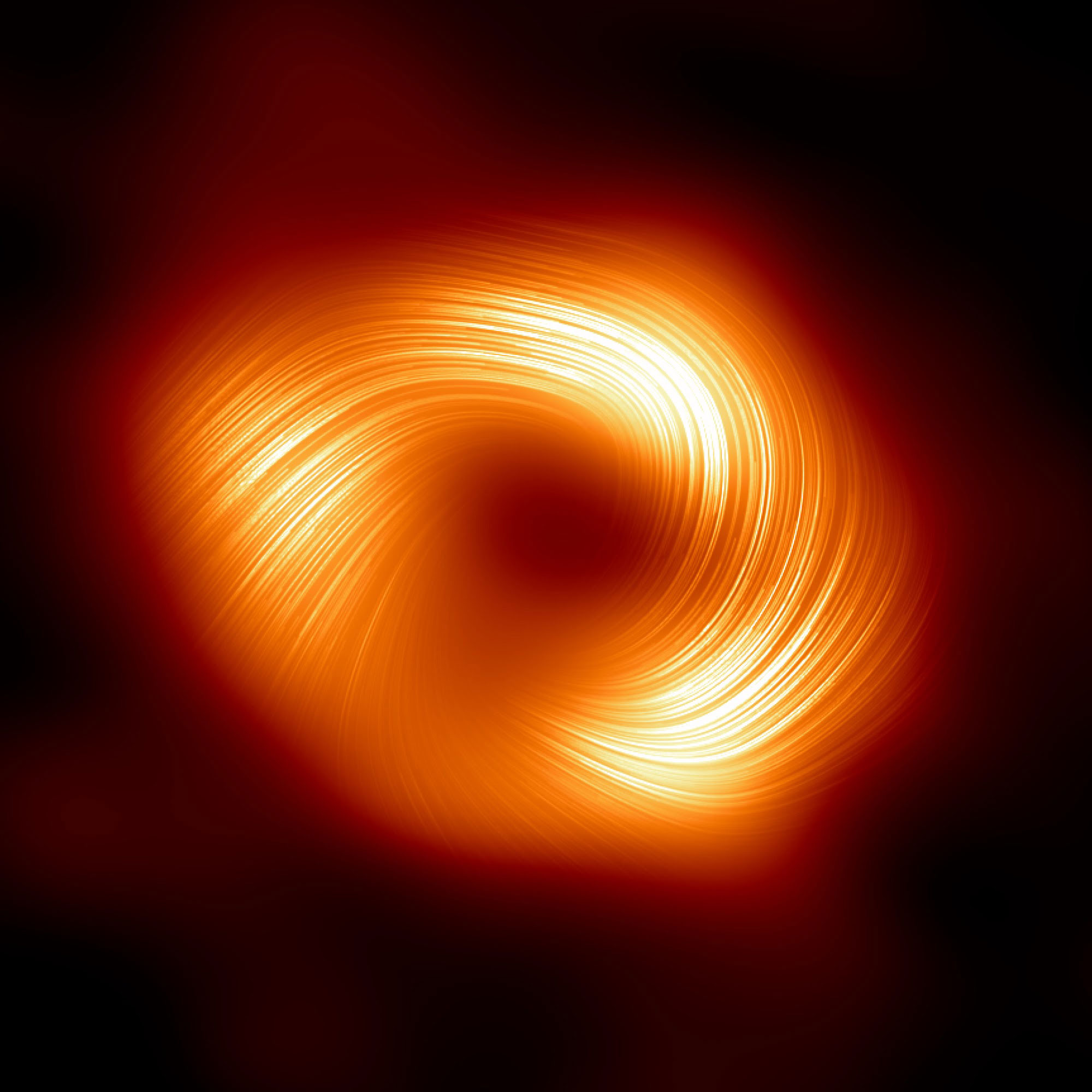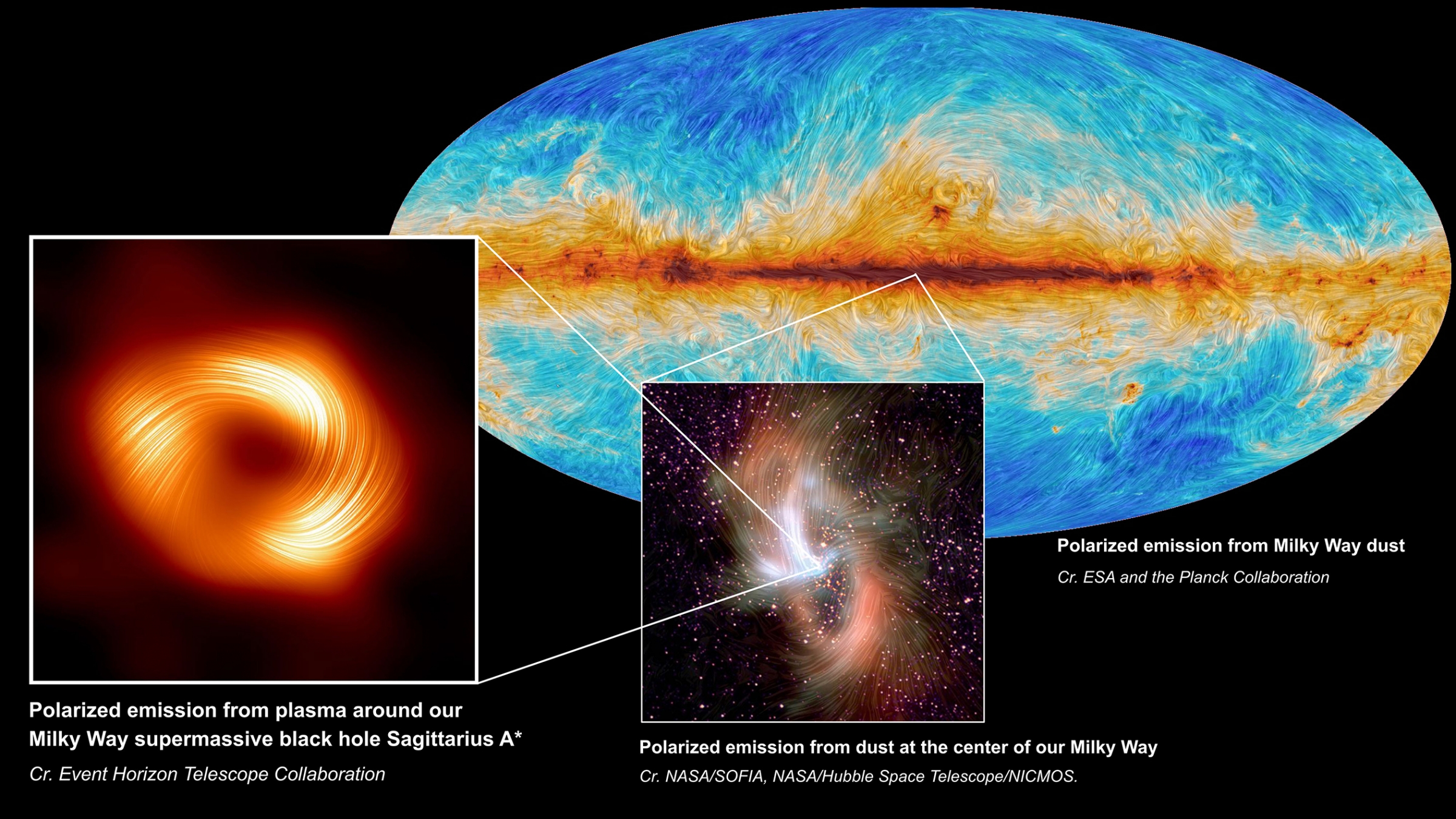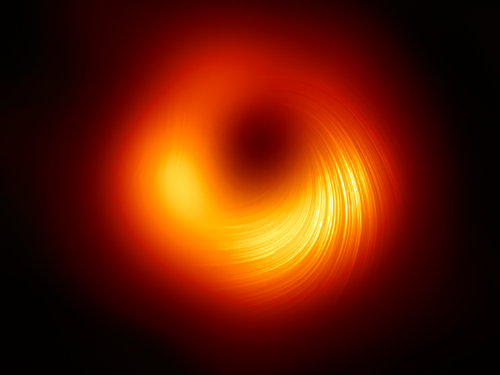
A “monster” in the Milky Way Galaxy

A polarized view of the Milky Way black hole, Sagittarius A*. The lines mark the orientation of polarization, which is related to the magnetic field around the shadow of the black hole. Credit: EHT Collaboration
The Event Horizon Telescope (EHT) collaboration, which includes scientists from the Center for Astrophysics | Harvard & Smithsonian (CfA), has captured a new view of the supermassive black hole at the center of the Milky Way Galaxy. This is the first time astronomers have been able to measure polarization, a signature of magnetic fields, this close to the edge of Sagittarius A* (pronounced "Sagittarius A star").
Scientists unveiled the first image of Sagittarius A* in 2022. Seen in polarized light, this new view of the monster black hole, Sagittarius A*, has revealed a magnetic field structure strikingly similar to that of the black hole at the center of the M87* galaxy, suggesting that strong magnetic fields may be common to all black holes.

Credit: S. Issaoun, EHT Collaboration
“What we're seeing now is that there are strong, twisted, and organized magnetic fields near the black hole at the center of the Milky Way Galaxy,” said Sara Issaoun, CfA NASA Hubble Fellowship Program Einstein Fellow, Smithsonian Astrophysical Observatory astrophysicist, and co-lead of the project. “Along with Sagittarius A* having a strikingly similar polarization structure to that seen in the much larger and more powerful M87* black hole, we’ve learned that strong and ordered magnetic fields are critical to how black holes interact with the gas and matter around them.”

This research is a microcosm of the work Smithsonian does in collaboration with different entities across the nation and around the world. The nature of black holes is only a sample of the mysteries of the cosmos waiting to be unraveled.



